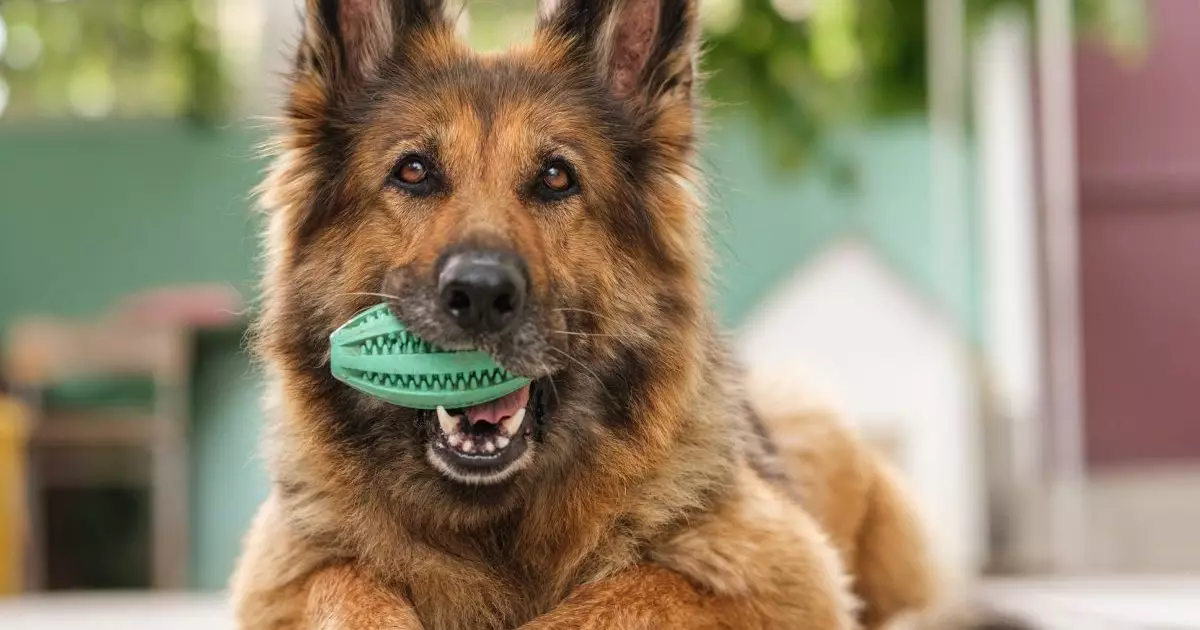Walking into a pet store can feel like stepping into a wonderland of color and excitement, particularly for dog owners. Rows of squeaky toys, rubber balls, and plush stuffies beckon, each promising to be the ultimate entertainment for your furry friend. However, the abundance of options can be daunting. With so many products, how can one determine which toys will captivate a dog’s attention and which will quickly find themselves at the bottom of a toy box? Recent research sheds light on the factors that contribute to a dog’s favorite playthings.
Insights from Canine Ancestry
At the heart of this investigation is the lineage of domestic dogs, which share a close genetic relationship with wolves. Researchers from the University of Bristol’s Veterinary School have sought to understand how these ancestral traits influence modern dog play. They believe that dogs might view toys through the same lens as wolves perceive their prey, gravitating toward items that resemble food or allow for destructive behaviors. John Bradshaw, a co-author of the study, warns about potential health risks associated with toys that can be torn apart, as ingestion of small parts can pose serious threats to a pet’s well-being.
The Experimental Approach: Testing Interests
In a carefully designed experiment, Labrador Retrievers, known for their playfulness and popularity, were presented with an array of toys. Each toy was introduced for a brief 30-second period in order to gauge the dogs’ responses. When the dogs lost interest, it indicated that the toys failed to hold their attention. By systematically contrasting the sensory qualities of each toy—such as color, odor, and material—the researchers aimed to pinpoint the elements that spark excitement. This method was critical, as it allowed for an observable shift in interest, suggesting that dogs are inherently drawn to novelty.
The Impact of Sensory Features
One compelling conclusion from the research is that no single characteristic guarantees a toy’s popularity. Instead, dogs tend to habituate to the sensory stimuli of their toys, including texture, sound, and smell. As a toy becomes familiar, its allure diminishes, similar to how a child might lose interest in a once-beloved game. The researchers noted that toys eliciting a temporary spike in excitement often did so due to their novelty rather than any enduring quality. This speaks to a dog’s innate curiosity and instinctual drive to explore new objects.
When discussing the ideal toy, co-author Anne Pullen emphasized the importance of toys that are soft and easy to manipulate. Those that make noise or can be chewed safely tend to maintain a dog’s attention for longer periods. In contrast, hard toys that don’t engage a dog’s sense of hearing are likely to be left untouched. Recognizing that dogs quickly tire of the familiar can help pet parents to curate a selection that regularly captivates their pups.
Perhaps the most significant factor contributing to a dog’s playtime excitement is human involvement. Often, toys become more engaging when a pet parent actively participates in play. According to Bradshaw, dogs thrive on social interaction, and toys become an extension of that bond. Without the encouragement and excitement provided by a human partner, even the most enticing toys may fail to sustain a dog’s interest.
One of the endearing traits of dogs is their lifelong enthusiasm for play. Unlike many other species that grow out of their playful behavior, dogs retain this desire into adulthood. This enduring spirit is part of what makes them such beloved companions and adjustments can easily be made in their toy selections to keep that spirit alive.
The findings from the University of Bristol provide valuable insights for pet parents seeking to enhance their dog’s play experience. With an understanding of the reasons behind a dog’s interest in toys, owners can make informed choices. Regularly rotating toys, engaging in playtime, and selecting toys that cater to a dog’s instinctual preferences will foster a more fulfilling play environment. In a relationship defined by loyalty and joy, nurturing a dog’s playful nature ensures that both pet and owner can enjoy the special bond that playtime creates.

